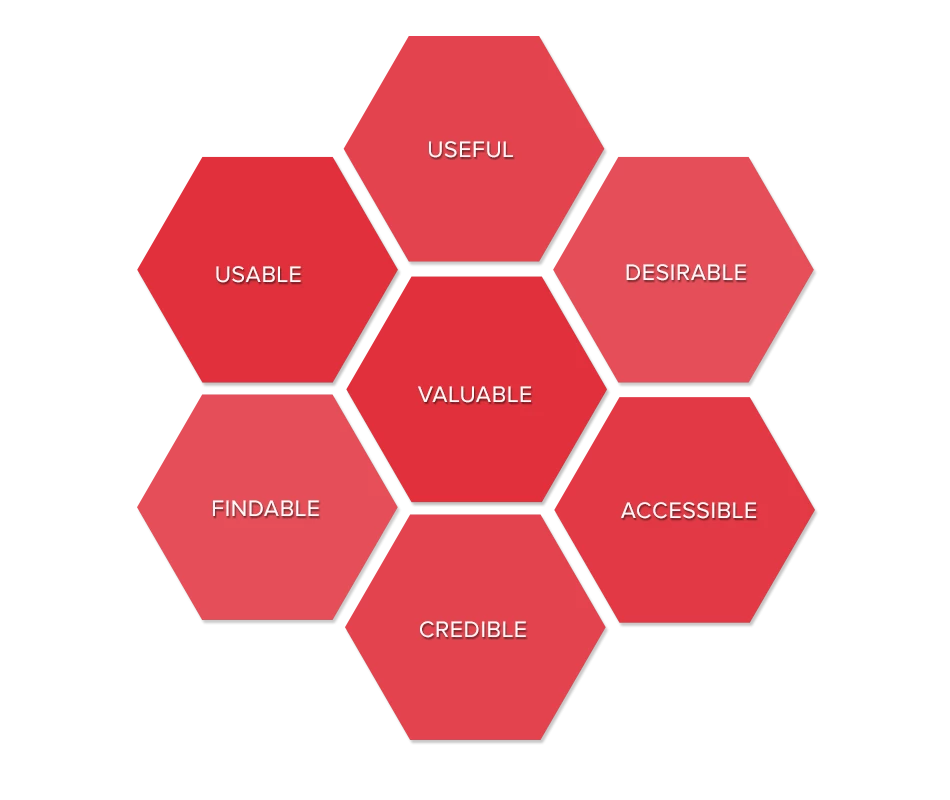The Importance of Design in In-House Applications

One can never overstate the importance of quality design for in-house applications. But it is so much easier to sell graphic services or ideas for sites and applications for the general public (“B2C”) than for internal use.
When seeking to attract customers to goods or services, the priorities are: visuals, user-friendliness, and the quality of customer service. On the other hand, when it comes to in-house applications, clients fear the cost of the design work, not to mention change in general. But before going any further, let’s explain what we mean by quality design.
Quality design
Quality design must be well thought-out, focused on users and their processes, and based on client business needs. Design quality has two aspects to it: esthetics and usability. An application may be beautiful yet difficult to use; conversely, an easy-to-learn system can be useless. Here are the multiple aspects of user experience:

- Valuable: The system must deliver value to end-users and the client. Value must be at the heart of every decision.
- Useful: The system must meet needs and help users accomplish their goals.
- Desirable: The system must trigger emotions and foster adoption through a strong, unique visual identity.
- Usable: The system must be intuitive, seamless and bug-free.
- Findable: Content must be easy to find, so users can get to what they are looking for quickly.
- Accessible: The system must comply with accessibility standards.
- Credible: Users must trust what they are being told.
A New Reality
Technology has advanced to such an extent over the last few years that consumers now take intuitive and powerful applications for granted. Fierce competition in the B2C world is spurring companies to constantly evolve and innovate to attract consumers. This means that customers are ever more selective, being keenly aware of what works and what doesn’t. Users of enterprise systems now expect in-house systems to be easy and pleasant to use. Why should they have to spend hours learning a system, when the system should adapt to them? Why should users have to spend all their time using ugly applications?

Debunking the Myths of User-Focused Systems
During exploratory meetings, clients often state that design is their lowest priority. Clients believe that design is just a bonus, and an expensive one at that. However, if you understand the true meaning of “design”, you realize that it is virtually impossible to do without it. What you need to do is change the way you assess the project’s completion status and return on investment. You can’t calculate a project’s status based merely on the number of lines of code completed or the number of features added; user satisfaction and meeting user needs are essential when it comes to calculating value. Ultimately, the success of an application is measured in terms of user satisfaction.
Are you worried about users having to relearn a system from the ground up?
A user-friendly, needs-based application saves clients training time and saves developers documentation work.
Are you re-writing an existing system?
By taking the time to validate what users actually use, and how they use it, you can concentrate on essential functions, dropping unused ones. This goes straight to your bottom line.
Do you work with multiple Excel documents and manual data entry?
By centralizing information, you minimize the risk of data entry errors.
Are your processes complex?
By taking time to thoroughly understand and optimize your processes, you gain productivity.
—
Further reading, and design return on investment calculator: www.usability.gov/what-and-why/benefits-of-ucd.html
